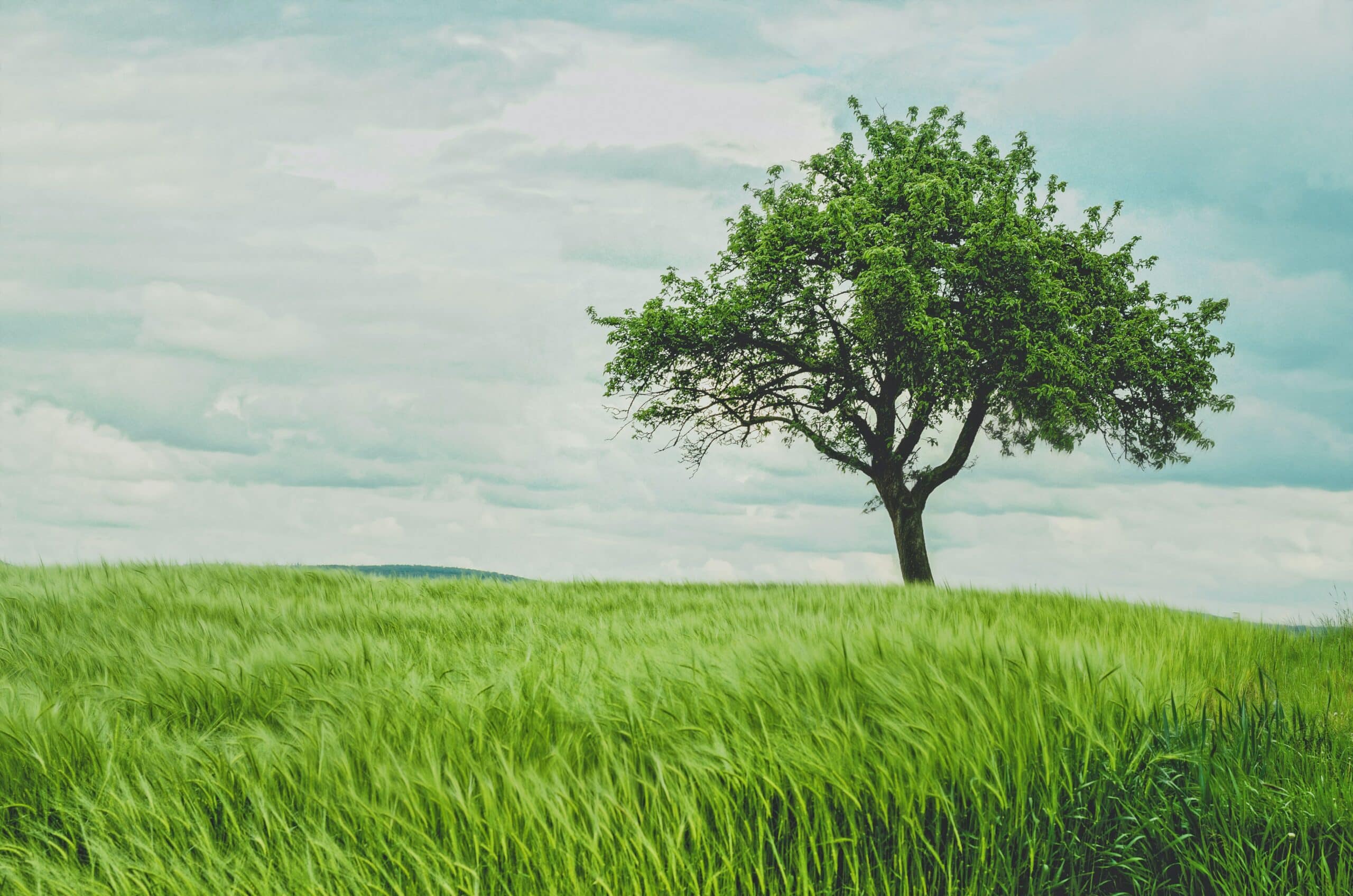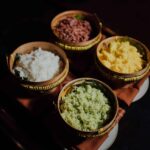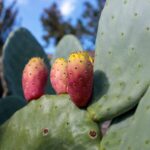Do you have a sweet tooth? Mangoes are one of the best fruits that can satisfy your craving for something sugary. But did you know that it is possible to grow mango trees in your backyard or garden? Growing mango trees is not an impossible feat, and with some patience and dedication, you will be rewarded with delicious fresh mangos in no time.
Have you ever wondered what it would be like to pick a juicy mango off a tree in your own yard? The feeling of accomplishment that comes with growing your own fruit is unmatchable, making the hard work worth it. And while it may seem daunting at first, growing a mango tree doesn’t have to be difficult. In fact, anyone can do it!
Mangoes are native to Asia but have since spread around the world. From India to Mexico, these tropical gems are grown in warmer climates and cherished by many. Now it’s time for you to join in on the fun by learning how to grow your very own mango tree!
Choosing Mango Varieties
Are you keen to grow mango trees? It can be a rewarding experience, and with the right variety of mango and suitable environment, you can easily have success. Let’s explore what it takes to get started.
Choosing the right variety of mango for your location is key: some types grow better in warmer climates, while others are more tolerant of cold temperatures. Consider researching varieties that do well in your area and decide which type will work best for you. Some popular varieties include the Tommy Atkins, Francis, Haden, Kent and Keitt Mangoes. Knowing the distinct characteristics of each type can help you determine which will suit your needs best.
It is also important to consider other factors when choosing a variety such as size, color, flavor and ripening time; all of these can affect how much fruit you get from your tree. Additionally, if you plan on growing more than one mango tree, it may be beneficial to choose different varieties so they don’t compete for resources (e.g., water and nutrients). Understanding these variables before planting can set you up for success down the road!
Now that we have discussed some basics about selecting mango varieties, let’s take a look at understanding the growth requirements for mango trees.
Understand The Growth Requirements For Mango Trees
When it comes to growing mango trees, choosing the right variety is only the first step. After all, every tree requires certain conditions to thrive, and mangoes are no different. Understanding these growth requirements is crucial for success.
From temperature and soil type to water and pruning needs, there are several elements to consider when growing a mango tree. Depending on the variety of mango you choose, the optimal climate may vary; some require warmer temperatures while others are more tolerant of cooler climates. Additionally, the tree should have access to 6-8 hours of direct sunlight per day.
Mango trees also prefer well-draining soil with a neutral pH balance between 6.5 and 7.5. Ample moisture is necessary for successful growth as well; typically mango trees need about 1 inch of water each week (or equivalent amounts of precipitation). Lastly, proper pruning will help ensure that your tree has plenty of airflow and light exposure in order to grow healthy fruit-bearing branches.
By taking the time to understand what your chosen variety needs in terms of environment and care, you can create the perfect conditions for your mango tree and enjoy its sweet fruits for years to come!
Preparing Mango Seeds For Planting
Planting mango seeds is the next step in growing a mango tree. Preparing mango seeds for planting requires knowledge and attention to detail. It’s essential to understand the growth requirements for mango trees, as well as how to properly prepare their seeds for planting.
Before getting started, it’s important to select a mature, ripe mango from which you’ll get your seeds. With careful examination and knowledge of what a ripe mango looks like, you can easily identify one that’s ready for harvesting. Once you have your mango fruit, you can cut it open and extract the seed inside. It should be completely intact with no cracks or other signs of damage.
Once the seed has been removed from the fruit, it must be cleaned and dried before planting. This process helps remove any bacteria or fungus that may have been present on the surface of the seed. After cleaning and drying, the seed needs to be soaked in water overnight before being placed in soil to begin germinating. With some patience and proper preparation of your mango seeds, you’ll soon be able to witness them sprouting into beautiful new plants!
Planting Mango Seeds
You may be wondering why you should bother planting mango seeds when there are easier ways to get a mango tree. The truth is, planting mango seeds and watching them grow is an incredibly rewarding experience! Not only do you get to see the full lifecycle of the tree, but you also save yourself some money in the process.
Planting mango seeds is surprisingly easy, and can be done indoors or outdoors. If you’re planting your seed indoors, start by filling a container with potting soil. Make sure it’s damp but not overly wet — too much water could cause the seed to rot before it has a chance to germinate. Then, plant the seed about one-and-a-half inches (4 cm) deep into the soil, and keep it moist. Once germination occurs (which usually takes 3-6 weeks), transfer the seedling into a larger pot that’s at least 8 inches (20 cm) deep and wide.
Outdoors, begin by selecting an area that gets plenty of sunlight and has slightly acidic soil. Dig a hole about 4 inches (10 cm) deep and place your mango seed inside. After covering it with soil, water it thoroughly and wait for germination to occur — this usually takes 2-3 months. When your seedling emerges from the ground, make sure you continue to provide adequate sunlight and water until it’s fully established.
Following these steps will give you everything you need to get started on growing your own mango tree!
Growing Mango Trees In Containers
It may seem ironic that something as small and seemingly insignificant as a mango seed could potentially grow into an incredibly large, majestic tree; however, it is possible to do so with proper care and growing conditions. Growing mango trees in containers is the perfect way for anyone to experience the joy of cultivating their own mango trees indoors or on a balcony.
This method of cultivation requires special attention to both soil and container size. The soil should be well-drained and amended with organic matter like compost or aged manure. The container should also be at least 12 inches deep and wide, allowing plenty of room for the roots to spread out without becoming cramped. Additionally, a few ventilation holes at the bottom of the pot will allow excess water to drain away easily.
In order to ensure that your mango tree receives all the nutrients it needs, fertilizing every few weeks throughout its growth period is recommended. This can be done with a balanced fertilizer – such as one containing nitrogen, phosphorus and potassium – which will help promote healthy growth and fruit production in your mango tree.
By following these steps carefully, you can enjoy watching your very own mini-mango tree take root and blossom into full bloom! With some patience and dedication, you’ll soon be rewarded with delicious mangos from your very own home-grown tree. Now that we’ve discussed how to grow mango trees in containers, let’s move on to discuss the water requirements for these plants...
Water Requirements For Mango Trees
A stitch in time saves nine – this adage rings true when it comes to mango tree care. Specifically, the water requirements for mango trees need to be considered carefully if you are looking for a bountiful harvest.
Watering mango trees is a careful balance between too much and too little. Too much water can drown the plant, and too little can cause it to dry out and eventually die. To get the perfect balance, check the soil moisture around your tree before watering. If the top inch or two of soil is dry, then it’s time to water. Giving your tree about an inch of water every week should suffice during hotter months while reducing this amount in cooler times.
When watering your mango tree, avoid spraying foliage which can lead to fungal diseases and instead moisten the soil near the base of the tree with a slow trickle at ground level. This will ensure that the roots are getting enough hydration without risking any damage to the leaves or fruit. Overall, monitoring your mango tree’s water requirements is an essential part of keeping it healthy and thriving!
Mango Tree Fertilization
Fertilization is the key to unlocking your mango tree’s full potential. As with any plant, a healthy diet helps them thrive. But for mango trees, this goes beyond just getting enough water. To ensure a long and healthy life—and delicious fruit—it’s important to provide the right nutrients in the form of fertilizer.
Much like human nutrition, there are different types of fertilizers tailored to specific needs. For mango trees, it’s best to use an organic fertilizer with a balanced ratio of nitrogen, phosphorus and potassium (N-P-K). This will help promote strong root growth and flower production while also providing essential micronutrients such as iron and zinc. Additionally, adding a bit of compost or manure can help boost the organic content of the soil which will provide even more nutrients for your tree.
When applying fertilizer to your mango tree, keep in mind that less is more; too much fertilizer can be detrimental to its health and decrease the quality of fruit production. Instead of using large amounts one time, opt for smaller applications several times throughout the growing season. Remember that each type of fertilizer has its own instructions for application rates so be sure to read them carefully before you start.
Taking these steps will ensure that your mango tree is well-fed and ready to produce juicy fruits come harvest time! With a little extra love in the form of regular fertilization, you’ll soon see your tree flourishing!
Controlling Pests And Diseases On Mango Trees
Controlling pests and diseases on mango trees is a critical part of mango tree care. It can be daunting to think about all the pests and diseases that might affect your beloved tree, but don’t worry! With a few simple steps and some regular maintenance, you can keep your tree healthy and strong. Let’s dive in!
First things first: it’s important to keep an eye out for any signs of an infestation or disease. If you spot something unusual, take action quickly to prevent it from spreading. Here are three easy ways to check for any potential issues:
- Look for wilting or discolored leaves
- Examine the trunk for signs of insect damage
- Check for spots or lesions on the fruit.
Once you detect a problem, there are a few different methods of pest and disease control that you can use to help protect your tree. Spraying with insecticides or fungicides is one option; if you choose this route, make sure to follow the directions carefully and always wear protective gear while doing so. You can also set up traps around the base of the tree, such as sticky paper or pheromone traps, to help catch any pests before they get too close. Finally, prune away affected branches promptly – this will help reduce the spread of any pests or diseases quickly.
Taking these steps will help ensure that your mango tree remains happy and healthy for years to come! Now that we’ve discussed controlling pests and diseases on mango trees, let’s take a look at how proper pruning can also benefit your tree…
Pruning Mango Trees
Pruning mango trees may seem like a daunting task, but it’s actually quite simple and can deliver great rewards. It’s an important part of maintaining healthy mango trees, so don’t skip this step. Plus, pruning helps the tree grow more fruit! So how do you go about doing it?
When it comes to pruning mango trees, timing is everything. Early spring is usually the best time to prune them since the tree will be in a dormant state and won’t be putting energy into new growth. You’ll want to remove any dead or damaged branches as well as any that are crossing or growing too close together. This will open up the canopy and allow more sunlight and air to reach all parts of the tree.
When you’re done pruning, don’t forget to water your tree thoroughly! This will help promote healthy root development which will lead to better fruits in the long run. And now that your mango tree is properly cared for, you can look forward to harvesting time and identifying ripe mangos!
Harvest Time And Ripe Mango Identification
Harvesting the fruit of your labor is arguably the most exciting part of gardening. The sweet reward of a ripe mango tree is something to savor. But when is it time to harvest your mangoes and how can you tell they’re ripe?
Let’s start with timing. Generally, mangoes ripen in late summer or early fall, depending on the variety and climate. Some varieties may take longer than others, but you’ll know when they’re ready by their color and aroma. Mangoes should be firm but slightly soft when touched and have an orange-yellow hue with some red blush. They’ll also give off a sweet scent that will draw you in!
Now that you’ve harvested your mangoes, it’s time for storage and eating! For mangos that aren’t quite ripe yet, leave them at room temperature until they soften up to eat as soon as possible. Ripe mangos should be kept in the refrigerator for up to five days before eating them. You can enjoy them fresh or make them into dishes like salsa and smoothies for a tasty treat!
Storing And Eating Ripe Mangos
It’s finally time to enjoy the fruits of our labor! Storing and eating ripe mangos is an important step in the mango growing process. Mangoes should be eaten within a few days of harvesting, so it’s best to pick them when they are fully ripe. To store them longer, you can refrigerate them for up to two weeks or freeze them for up to six months.
When preparing mangos, you can simply cut off the flesh and eat it as is or add it to salads, smoothies, and other dishes. You can also make delicious mango chutney and preserve the pulp for later use. The peel of a ripe mango is edible too – try adding some grated peel to your dish for an extra zing!
The key is not to let these delicious fruits go to waste! Enjoying your harvest can be a rewarding experience that will keep you motivated as you continue with this exciting gardening journey. So dig in and savor every bite – after all, you’ve worked hard for it!
Common Problems When Growing Mango Trees
Growing mango trees can be a rewarding experience, but it also comes with its own unique set of challenges. From pests to diseases, there are a number of common problems associated with growing mango trees that can be difficult to manage. Like an orchestra conductor leading their ensemble, let’s explore the various issues and how you can keep your tree healthy.
First off, mango trees are susceptible to pests like mealybugs and mites. These critters feed on the leaves and sap of the plant, causing damage to the structure and reducing fruit production. To prevent infestations, it’s important to regularly inspect your tree for signs of these pests and take action as soon as possible if you find any.
Another issue is fungal diseases, which can cause yellowing of the leaves and premature fruit drop. To reduce the risk of infection, make sure your tree has plenty of air circulation – prune away excess foliage or thin out dense areas if necessary – and water only at the base of the trunk rather than onto the foliage itself.
Finally, nutrient deficiencies can also put a strain on your mango tree’s health and lead to stunted growth or even death in extreme cases. To ensure your tree has access to all essential nutrients, consider applying fertilizer once or twice a year as part of your regular maintenance routine. Taking these steps will help you get one step closer towards cultivating a thriving mango oasis!
Considerations For Growing Mango Trees
Growing mango trees can be a rewarding experience. Because they are tropical plants, they require proper care and attention to thrive in most climates. As such, there are some considerations you should make before embarking on this journey.
First of all, you’ll want to select the right location for planting your mango tree. The ideal spot should receive plenty of direct sunlight and have well-draining soil. Additionally, it’s important to determine the type of mango tree that will best suit your climate before buying a sapling or seed. Some varieties will grow better in certain areas than others.
Finally, you’ll need to consider how much time and effort you’re willing to put into caring for your mango tree. Regularly pruning and fertilizing the soil can help keep the plant healthy and ensure that it produces quality fruit each year. It’s also essential to provide plenty of water during dry spells so that the roots don’t dry out. With these factors in mind, you can be sure that your mango tree will become a valued addition to your garden! Now let’s look at some tips for growing mango trees successfully.
Tips For Growing Mango Trees
Growing mango trees can be a rewarding experience, with the potential to yield delicious fruit year after year. But it can also be tricky, and if you don’t get it right, it could spell disaster for your beloved tree. So what are some tips that will ensure success? In this section, we’ll explore the best ways to nurture your mango tree and help it reach its full potential.
First, you’ll want to make sure you have the right climate for growing a mango tree. Mangoes thrive in warm temperatures, so look for a spot that gets plenty of sunshine and has warm nights. You also need to pick a spot that has well-draining soil and good air circulation to avoid any fungal or bacterial diseases.
Next, you’ll want to pay attention to how much water your mango tree needs. Too much water can cause root rot and other issues, while too little can cause the leaves to wilt and the fruit won’t grow properly. Additionally, regular fertilizing is important for promoting healthy growth and ensuring an abundant harvest each year.
Finally, keep an eye out for any pests or diseases that could affect your mango tree’s health. Don’t hesitate to contact a local nursery or agricultural office if you notice anything unusual as they will be able to provide advice on how best to treat the problem before it becomes serious. With these tips in mind, you’re sure to have success in growing your own mango trees!
Troubleshooting Mango Tree Problems
Growing mango trees can be like a rollercoaster ride, full of ups and downs. But with the right knowledge and tips, you’ll be able to navigate any issues that arise. In this article, we’ll discuss common problems with mango trees, and how to troubleshoot them.
Mango tree problems often stem from improper care. If you’re not sure what kind of soil is best for your mango tree, consult an expert in your area for advice on fertilizers and nutrient levels. Additionally, make sure your tree gets plenty of sunlight each day – at least six hours – and is kept well-watered during hot months.
Finally, pest infestations are a common issue among mango trees. Regularly inspect your tree for signs of bugs or disease, such as powdery mildew or scale insects. If you spot any issues, take action immediately by treating the affected areas with insecticide or fungicide according to the manufacturer’s instructions. With the right preventive measures in place, you’ll be able to keep your mango tree healthy and productive all year long!
Frequently Asked Questions
How Long Does It Take For A Mango Tree To Bear Fruit?
Growing mango trees is an exciting endeavor, and the results can be enticingly sweet! But how long does it take for these tropical trees to bear fruit? The answer depends on the type of tree and its conditions.
Generally speaking, it can take anywhere from three to six years for a mango tree to start producing fruit. This period of time can vary greatly due to differences in soil, climate, and environment. If the tree is planted in an area with ideal conditions, such as plenty of sunlight and adequate moisture, it may produce fruit sooner than expected. However, if it’s grown in a less favorable environment, the time frame could be much longer.
It’s important to remember that while growing mango trees requires patience, the end result – delicious mangos – is well worth the wait! So whether you’re growing your tree indoors or outdoors, make sure you provide proper care and nourishment so that your mango tree will thrive and eventually deliver a bounty of sweet fruits.
Are There Any Special Requirements For Growing Mango Trees In Cold Climates?
Growing mango trees in cold climates can be a challenging task, but not impossible. With the right preparation and care, there are several things one can do to ensure success. Here are 3 special requirements for growing mango trees in cold climates:
Planting: Choose a variety of mango tree that is well suited for cooler climates, such as Irwin or Nam Doc Mai. When planting, place the tree in an area that will receive at least 8 hours of direct sunlight and provide it with plenty of space for its growth.
Protection: Mango trees require protection from heavy winds and frost during the winter months. Consider building a windbreak around your tree to protect it from strong gusts of wind, as well as wrapping it with burlap or other fabric to help keep the warmth in during cooler temperatures.
Pruning: Prune your mango tree regularly to keep it healthy and encourage new growth. Be sure to trim away any dead branches or areas that appear diseased so they don’t spread further within the tree. Also, remove any fruits that may be developing during cold weather periods, as they won’t ripen properly due to the climate conditions.
With these special requirements taken into account, you can have success growing mango trees even in colder climates! Don’t let this daunting task prevent you from enjoying delicious homegrown mangos – just follow these tips and you’ll be on your way!
How Often Should I Water My Mango Tree?
Watering your mango tree is an essential step to helping it grow and thrive. Depending on where you live, the frequency of watering may change. In most climates, it’s best to water your mango tree twice a week. That said, it’s important to check the soil moisture before each watering session. If the soil is already moist and doesn’t need more water, then it’s best not to water it as overwatering can lead to root rot and other issues.
For those in colder climates with colder temperatures, you’ll want to reduce the frequency of watering to once every two weeks or so. This will help ensure that your mango tree can properly absorb all the nutrients it needs without risk of overwatering or root rot. Additionally, if you experience a sudden drop in temperature during winter months, be sure to adjust your watering schedule accordingly since mango trees are more sensitive to cold weather than other plants.
When determining how often you should water your mango tree, always keep an eye on the soil too see if it needs more moisture or not. By ensuring that your mango tree receives just enough water for its needs—but not too much—you can guarantee that it has what it needs for vigorous growth and healthy fruits!
Are There Any Special Fertilizers I Should Use For Mango Trees?
Growing mango trees is an exciting endeavor, and with the right care, you can enjoy a bountiful crop of delicious fruit. It’s important to give your tree the right fertilization for optimal health and growth. So, are there any special fertilizers you should use for mango trees? The answer is yes!
When it comes to fertilizing your mango tree, it’s best to use an all-purpose fertilizer with a balance of nitrogen, phosphorus, and potassium. Make sure the fertilizer contains micronutrients like zinc, boron, iron, manganese and copper. Additionally, applying a slow-release fertilizer specifically formulated for tropical fruit trees will help ensure that your tree gets the proper nutrition throughout the season.
You should also consider adding organic matter like compost or aged manure around the root zone of your tree to increase soil fertility. This will help promote healthy growth and encourage larger fruit yields. Plus, it’ll add valuable nutrients back into the soil so you won’t have to use as much fertilizer over time.
So if you’re looking to get started growing a mango tree in your garden or backyard, remember these tips when selecting fertilizers. With proper care and attention, you’ll be rewarded with an abundant harvest of sweet and delicious mangoes!
What Kind Of Container Is Best For Growing Mango Trees?
Are you wondering what kind of container is best for growing mango trees? When it comes to containers, there are a few things to consider. First, the container should be big enough so that the roots of the tree have plenty of room to grow and expand. It should also be deep enough so that the plant can get enough water. Secondly, make sure that the container is made of a material that will not break down easily over time, such as terracotta or ceramic.
The type of soil you use in your container is also important. You will want to use a soil mixture that is rich in organic matter and well-draining. You may want to add fertilizer to give your mango tree an extra boost of nutrients. Also, make sure that the soil stays moist but not soggy—mango trees love humidity, but too much moisture can lead to root rot.
Finally, if you’re growing your mango tree indoors, it’s important to choose a spot with lots of light and away from cold drafts or other sources of extreme temperatures. This will help ensure that your mango tree gets all the light it needs and grows healthy and strong!
Conclusion
The mango tree is a beautiful addition to any garden and with the right care, can provide delicious fruit for years to come. The process of growing mango trees does take some time and effort, but it is worth it for the reward of enjoying homegrown mangos. With a little patience and dedication, anyone can be successful in growing their own mango trees.
Alluding to an old adage, “Good things come to those who wait”, this could never be more true when it comes to gardening. The same goes for growing mango trees; with proper care and attention, the sweet rewards will come when they are ripe and ready to enjoy. Knowing that you have grown these delicious fruits yourself gives such a feeling of accomplishment and pride.
The mango tree is truly a magnificent sight that adds beauty to your garden as well as providing delicious fruit. Taking the time to learn how to properly care for them will ensure that you get the most out of your mango tree and have an abundance of juicy mangos each year. So don’t be discouraged if it takes some time before you see any results- keep in mind that good things indeed come to those who wait!





























